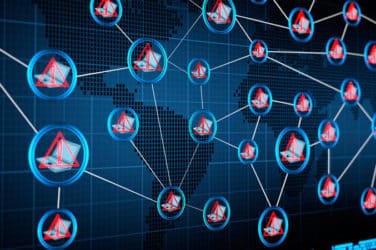DataArt.com – New York & London – DataArt, a leading global technology consultancy, predicts that 2017 will be a year of integration, disruption and transformation due in large part to the digitalization of key industry sectors.
Practice leads at DataArt see the following trends for 2017 by sector:
Financial Services and Capital Markets
- Cyber security and data protection will become major board-level concerns as financial institutions realize that failing to protect customer information will be their biggest source of regulatory non-compliance and reputational risk. Organizations will invest heavily in correcting technology vulnerabilities, lax cultures and poor processes. As a result, data management in all its forms will dominate 2017.
- Rapid digitalization of customer-facing services will be a matter of organizational life and death as e-commerce and fintech elevate expectations for the optimal user experience (UX). E-commerce and fintech will increasingly provide attractive alternatives to traditional financial services organizations.
- Artificial Intelligence (AI) and automated business process management (BPM), including machine learning (ML) supported systems, will provide a competitive advantage as well as productivity improvements.
- Cloud Computing will continue to evolve into a mission-critical element in the operational infrastructures of financial institutions, becoming the best route to resolving legacy system headaches and reducing operational risk to the lowest possible levels. Without a cloud strategy, organizations will not be able to compete in the marketplace.
Travel
Artificial intelligence, machine learning and conversational interfaces will drive changes in the travel sector.
Consumer-facing travel distribution brands and airline suppliers will accelerate their efforts in Artificial intelligence (AI) and advanced Machine Learning (ML). OTAs (online travel agencies) and meta data providers will continue to heavily invest into a broader framework and architecture that learns as a human, leveraging historical data to predict e-commerce options.
As travelers are increasingly connected at every level via mobile-facilitated instantaneous communication, connected sensors and smart devices will consistently and seamlessly capture the massive amounts of generated data. AI-based chat bots will become more prevalent and further enhance conversational interfaces with the traveler.
In 2017, tech leaders will continue to invest R&D efforts into deeper access and collection of personalized data to better serve the traveler. Personalized customer service will become a priority, and companies will continue to invest heavily in digital transformation, with a focus on traveler-facing products and data intelligence.
Telecom
DataArt expects a major transformation in service delivery due to cloud-enabled technology, software defined networking and 5G.
- We’ll see a continued proliferation of innovative, over-the-top mobile applications that enhance professional and social communications thanks to commercial deployment of Web Real-Time Communications (WebRTC), a technology that allows streamlined, cloud-enabled and decentralized communications and information sharing, harmonized across devices.
- Network Function Virtualization (NFV) and Software Defined Networks (SDNs) will start to transform the telecom business, enabling faster and more flexible onboarding and support of new services, and giving users access to a wide range of content and applications.
- 5G will begin to revolutionize the industry in 2017, ushering in new classes of services, capabilities and related changes in mobile computing. IoT (Internet of Things) will be a significant growth area in the telecom as Mobile Edge Computing (MEC) proliferates towards the latter half of year.
Healthcare
The new administration will dramatically impact the healthcare industry, especially as the new president and GOP Congress push to either replace or repeal Obamacare.
- While this will lead to the revamping of existing workflows and IT systems to comply with new regulations, it may free up the ability for health systems and health IT vendors to innovate in directions they previously did not even consider.
- 2017 will see a proliferation of healthcare start-ups. New start-ups will explode into the healthcare industry with disruptive augmented reality products without the previous limitations of virtual reality. As this technology advances the everyday healthcare experience, it will exist on the line between the real world and virtual in what is being called mixed reality.
- Beyond formal start-ups, 2017 will see the real start of DIY health hacking. There will be significant levels of unregulated innovation. The DIY healthcare revolution will truly begin in 2017. As formal medical processes take too long, cost too much and are too risk averse, people will develop their own solutions which have real value, but without clinical evidence as currently defined.
- It’s all about integration. Health IT systems, like the major EHRs (electronic health records), have their work cut out for them to achieve interoperability. Meaningful use requirements for a patient to be able to access their health information using an API (application program interface) will open up an opportunity for many smaller companies to innovate around the open APIs of the big EHR platforms, creating additional value for all parties in the industry.
IoT
For the IoT industry, 2017 will be a year of digital disruption across all industries as technology transforms markets and business models adapt to changes requiring companies to be more innovative and agile in the “connected economy.”
- Cloud enablement and Machine Learning (ML) are the obvious answers to the transformation process challenges. This year, DataArt saw an increased demand for these technologies in the areas of data collection and management, resource optimization, automation and reduction of operational expenses, and predictive maintenance, analytics and forecasting.
Media and Entertainment
In 2017, we will see a wave of consolidation in the digital media industry, largely driven by traditional media companies aiming to achieve scale online through acquisitions.
- Organizations will invest heavily in proper data governance and integration as a result of a large number of mergers and acquisitions that will happen in 2017.
- Digital media and publishing will focus on increased personalization in the coming year, such as custom recommendations.
- The entertainment industry will be faced with the task of providing enhanced experiences to engage consumers, including further adoption of virtual reality and augmented reality in the coming year.
- The streaming market will continue to grow in 2017, while the war between competing platforms shows no signs of slowing down, as companies seek innovative methods to differentiate themselves from the pack.
- We will see a continued effort to add transparency to digital transactions and streamline payments to rights-holders through technology: using blockchain, global databases, and open-source/automated licensing platforms.
In Addition:
- We may see sustainability / environment impact considerations that move beyond traditional energy and transportation sectors, and enter mainstream thinking in projects across different industries, including finance, healthcare and retail. Expect to see increased efforts to evaluate projects through a multi-dimensional lens, including economic, marketing, security – and now sustainability impact.
- The technology industry leads the world in operating across borders, time zones and cultures. With the increasing protectionist movements across the globe, the pressure is on us to demonstrate how global, distributed, technology-powered operation can continue to be a way to make markets work better for everyone.





